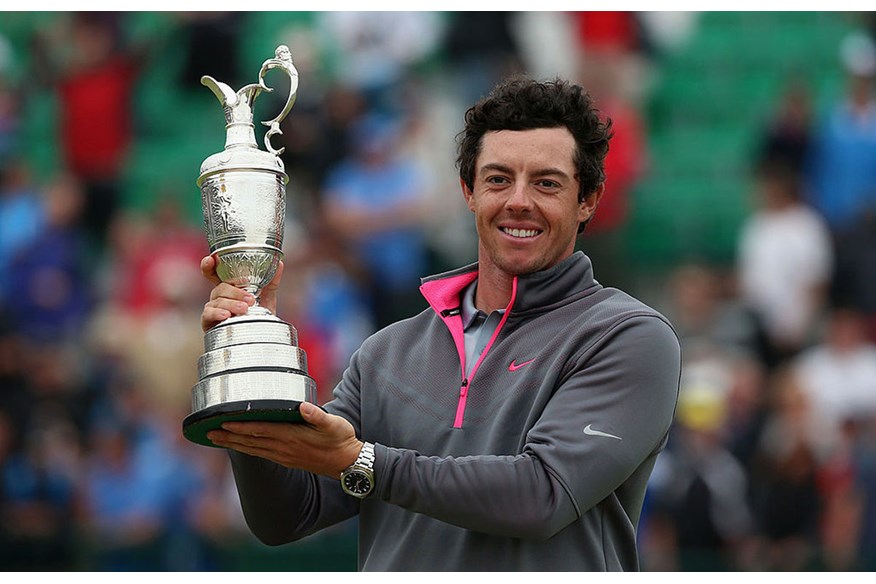The Open 2023: Everything you need to know about The Open
Last updated:
Hoylake has a hard task following the 150th Open at St Andrews, but it can deliver a unique spectacle unlike any other course on The Open rota.
Today’s Golfer’s 2023 Major coverage is brought to you in association with TaylorMade.
Hoylake has never been seen as a golfer’s town, but it sure does feel like one whenever The Open comes to this sports-mad corner of the Wirral Peninsula.
From July 17-23, more than 260,000 fans are expected to occupy this small-town venue along Meols Drive, breaking the record for the most spectators in an event outside of St Andrews.
This year excitement surrounds a raft of changes to the course, including a new hole and par, which will present an altogether different challenge to the 12 Open Championships that have gone before at Royal Liverpool.
We sent our team to play it and spoke to the people that matter to examine the changes, assess the challenges and pass judgment on what is being hyped up as one of the most exciting finishes to a Major championship venue…
The Open 2023: Key info
Course: Royal Liverpool, Wirral
Date: July 20-23, 2023
Par: 71 Yards: 7,383
Field: 156
Cut: 70 and ties
Defending champion: Cameron Smith

What do the history books tell us?
Royal Liverpool has been around for 154 years and is one of England’s most celebrated and oldest links. It remains a favorite of the R&A because of its history, location and willingness to evolve.
Some of the greatest golfers of their respective generations have triumphed here, including J.H. Taylor, Walter Hagen and Peter Thomson. Bobby Jones even won the second leg of his Grand Slam at Hoylake in 1930. Those are the sort of names that ring out through history.
Of course, you can’t always tell the quality of the course by the quality of the champions, but it does help that Tiger (2006) and Rory (2014) lifted the Claret Jug here as well. People recall their wins more for the quality of ball striking – with a 2-iron or otherwise – than the fact they contributed to two of the four lowest winning scores at The Open since 2001. That’s not necessarily a bad thing, but it did prompt officials to draft in designer Martin Ebert to build a new hole and oversee a number of other modifications to the links in preparation for this year’s event.

How much has Royal Liverpool changed since 2014?
The club have taken steps to tame the big hitters by increasing the length by 71 yards and cutting the par from 72 to 71. Eagle-eyed fans will also notice changes on the 4th, 7th, 8th, 13th and 15th. Greens have been raised, bunkers and tees added, and run-off areas extended.
The most obvious change – besides the creation of a new hole – is a new back tee on the par-5 18th, stretching it to a far meatier 607 yards. The internal out of bounds has also been pinched in by 20 yards, adding further jeopardy to a hole that could deliver big swings in scoring.
“I certainly feel that the finish now is one where a three or four-stroke lead isn’t guaranteeing anything,” says Grant Moir, Executive Director – Governance at the R&A. “What is good about the 18th now is that it tests the second shot much more.
“Previously, players could drive up to the corner of the dog-leg, but now any lay-up will need to come across the angle, bringing the boundary into play more. It will make the players think a lot more.”
How prevalent is the internal out of bounds?
Significantly less than in previous Open Championships, but it remains an important part of the course and a fearful presence. Nowadays it only really affects two holes – the 3rd and 18th – which wrap around the spectator village during the championship.
The 3ft-high ‘cops’, the local term for the mounds which mark the out of bounds, lurk menacingly close to the edge of each fairway and green, waiting to gobble up any shot that veers too far right. In 2014, that fate befell Phil Mickelson, whose second shot bounded into the grandstand, forcing him to take the lonely walk back to play the same shot again. On any other course, he would have been granted a free drop, but not so at Hoylake. This year will be no different.

How good is Hoylake?
That depends on who you ask. Some say it is too flat and uninspiring, but many consider it to be the fairest and most unique course on The Open rota. Regardless, the course does stand out for being the only one that employs a different configuration of holes than those which are used by members.
As has been the case since 2006, the 1st hole plays as the 17th on the members’ cards, while the 18th finishes on the par-5 16th to accommodate a 7,000-seater grandstand around the green.
Recent changes – including turning one par 5 into a par 4 – have toughened the course up, but not to the extent that big hitters will have a big advantage, according to Royal Liverpool Head Pro John Heggarty. Sure, it ranks as the second-longest of the nine courses on The Open rota at 7,383 yards, but this fast-draining links tends to play a lot shorter during the summer because of the notoriously firm fairways.
“It will play harder (than 2014), just by virtue of it being longer and a par 71 rather than a 72, but the routing is very much about being strategically in the right place,” explains Heggarty. “You need to respect the links. If you try and overpower it, then what looks like a benign situation can end up putting you in a challenging circumstance.
“I liken the fairway bunkers to a parkland’s water and trees. If you hit in the water or behind a tree, you expect to be penalized. And likewise, if you hit it into a bunker at Hoylake, it’s very unlikely you’ll be able to do anything else but put it back in play. One of the key priorities for all competitors will be staying out of the bunkers and rough.”
As for Tiger’s tactic in 2006 of keeping his driver in the bag, Heggarty believes it was a one-off strategy from a one-off player. There is a time and place to attack and if you need to make up ground come Sunday, there are opportunities to get aggressive coming down the stretch.
“There are lots of opportunities for movement on the leaderboard or indeed for whoever is leading to reinforce their position, starting with the 14th, which is where Tiger holed his second shot in 2006,” he says.
“You’ve also got two par 5s – the 15th and 18th – which are now over 600 yards, compared to mid 500s in 2014. That extra distance is going to add an extra challenge.
“If somebody is red-hot with a putter, the last five holes present great opportunities to go on a birdie run. But equally, the course will not be a respecter of poor shots.”

The new 17th hole at Hoylake
Martin Ebert has not only created a new hole – by doing so, he has also entirely transformed the cadence of Royal Liverpool’s finale, producing a par 3 that forces jeopardy and risk upon even the most conservative of Open Championship contenders.
The tee shot, played to a green sited high in the dunes, is visually stunning but also hides as many threats as it reveals. Anything short, long, left or right will kick off into bunkers or scrubland, and even finding the putting surface is no guarantee of safety, with run-offs in all directions. Is it a little piece of Whistling Straits on the Wirral, or an inspired addition to The Open rota? The debate won’t be settled until the final group in the final round have played it – and maybe not even then.
Architect Martin Ebert tells Top 100 Editor Chris Bertram about the pressure and process behind creating a brand-new hole for The Open…
What was the inspiration behind building a hole so short for a major?
The concept for reversing the old par-3 15th (Open numbering) came from within the club and the R&A. The objective was to produce a short par 3 – it is only 134 yards – with the capacity to produce a high range of scores.
Whether that has been achieved is for others to judge but it is likely that there will be plenty of birdies as well as some far higher scores made during The Open.
How neatly does it fit into the routing?
It is great that the new hole has become the 17th so it will come at a key time in the final round. One of the added benefits of reversing the old hole is that it allowed the 18th to be lengthened to over 600 yards by providing room for a new back tee.
The change also allowed the par-5 15th to be lengthened to over 600 yards so the two par 5s in the closing four holes will now be a much tougher prospect with the potential for some large scoring swings between the leaders.
What are its defenses?
The green is very small and slightly angled to the line of play but the surface is lower at the front than the back, so that will help with the control of the tee shots. There is a slight rise halfway up the green but, other than that, not much undulation. The wind strength and direction will play a huge factor in the challenge of the tee shot.
If you miss the green, is one of the bunkers the better shot?
The best place to miss the green is probably the bunker to the left as that’s the one which is the least deep. The deepest of sand pits awaits at the front with a steep approach drawing any ball slightly short back into it, and the one to the right of the green is extremely deep. The sand area over the back could lead to a bad lie and a very tough recovery.
How will the different tee options work?
There are shorter tees to the right but The Open will be played from the main direction on all four days. I imagine that the hole will be varied in length during the event as the Postage Stamp was at Royal Troon when it was played as short as 100 yards.
Can it be to Hoylake what the 8th hole is to Royal Troon?
I hope that might be the case and the fact that it will play as the 17th and 71st hole in The Open could lead to that. However, Hoylake has 18 great holes.
How big a factor will the weather be at The Open?
Back in 2014, a local caddie warned us that the course can play up to “six shots different” when the wind whips in off the Irish Sea. The R&A have cautioned against making such bold predictions, though Grant Moir is expecting the course to play tougher this year and hasn’t ruled out a repeat of the baked-out fairways of 2006.
“Well, we’re not averse to burnt fairways,” he says, smiling. “We’re very much about letting the conditions dictate how the course plays and if that means firm and fast fairways and greens, we are certainly very, very comfortable with that.”
The players may think otherwise, though there is still an expectation among members and staff at Royal Liverpool that the winner will go deep into red figures. As is often the case at The Open Championship, a lot is likely to depend on the weather and the luck of the draw.
“There are a number of defenses, such as the bunkers, the run-offs around the greens, the fact you rarely find yourself on a level lie in the fairway,” says Heggarty. “But they only really come to the fore depending on the weather. It could bring an awful lot of strategy into play using lower-flighted tee shots and approach shots.
“The holes move in different directions and if I look out of the window now, it’s probably about a club-and-a-half wind. And that is enough, with firm fairways and firm greens, to test the very best players in the world.”

Will LIV Golf players play in The Open?
The R&A were almost backed into a corner when Cameron Smith won the 150th Open and promptly jumped ship to join the Saudis weeks later.
They were never going to preclude the defending champion – or anyone else from LIV Golf – from competing this year, though only 12 of the 48 rebels have earned an invite through various exemption categories.
LIV Golf players playing in The Open
Cameron Smith
Brooks Koepka
Dustin Johnson
Bryson DeChambeau
Louis Oosthuizen
Phil Mickelson
Patrick Reed
Henrik Stenson
Richard Bland
Joaquin Niemann
Thomas Pieters
Talor Gooch
READ NEXT:
– The 40 moments that defined The Open
– Full field for the 151st Open at Royal Liverpool
– The Open TV coverage: UK and US times
– Revealed! Who will win the 2023 Open
– The complete Royal Liverpool course guide
Join Today’s Golfer for unlimited access to premium content and exclusive rewards!

